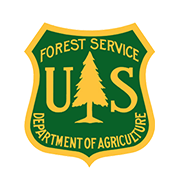Single Publication
Could not determine your location.
Jenkins Creek Fire Daily Update June 13, 2025 06-13-2025
Jenkins Creek Fire
Publication Type: News - 06/13/2025 - 10:00
A National Incident Management Organization (NIMO) Team is managing the Jenkins Creek fire under a full suppression strategy. Ensuring public and firefighter safety remains a primary priority.
The fire continues to smolder in areas of thick spruce budworm affected vegetation, deep peat, and sphagnum moss.
Light rain continues though noon today. Skies will remain cloudy through the day with colder temperatures during the afternoon. A weak light high pressure system returns over most of the week with minimal to no chance for rainfall.
Jenkins Creek Fire Quick Facts
Size: 16,145 acres Containment:94% Personnel: 154
The contingency line from Cadotte Lake Campground along Bundle Lake Road have tied in with the Town Line Road today. Crews are cleaning up the road behind the masticators by completing the residual saw work, low stumping and cleaning debris off the road. Masticators along the 420J and 420 Roads are making slow but steady progress working to tie contingency lines in this area of the fire together. The Unmanned Aerial Systems (UA/Drone) units have completed the mapping of the fire and are compiling final data. They will continue to look for any hotspots in the interior of the fire. There has been no significant smoke or heat located in the fire area though some heat sources are undetectable until warming and drying patterns allow them to grow. An engine crew is stationed at Skibo Vista to act as lookouts for any smoke and assist with radio relay.
Fire Weather & Behavior: Light rain continues though noon today. Skies will remain cloudy through the day with colder temperatures during the afternoon. East winds around 10 mph will make things feel even cooler. A weak light high pressure system returns over most of the week with minimal to no chance for rainfall. Winds will remain light from the south. Smoke from the fires in Canada are affecting the air quality bringing hazy conditions to the area.
Fighting Fire in the Interior: Firefighters address the interior of a wildfire through a combination of direct and indirect attack strategies. Direct attack involves applying water or fire retardant directly to the fire while indirect attack focuses on creating barriers and burning fuels ahead of the fire. They also employ techniques like mop-up, where they remove burning materials and cool ash pits to prevent the fire from re-igniting. Firefighters pump water from various sources (like fire hydrants, ponds, or streams) through hose lines and nozzles to directly extinguish the fire. Portable tanks or pumps allow firefighters to carry water and spray it onto the flames while Tanker trucks carry large quantities of water and can either pump water directly to the fire or deliver it to a water source for use by other equipment. Backfires, intentionally setting fire in front of the main fire, removing or clearing vegetation, and using heavy machinery or hand tools to create cleared areas are some of the indirect techniques used

 InciWeb
InciWeb